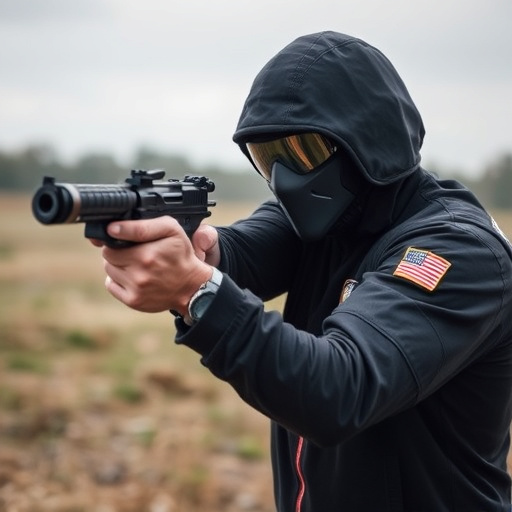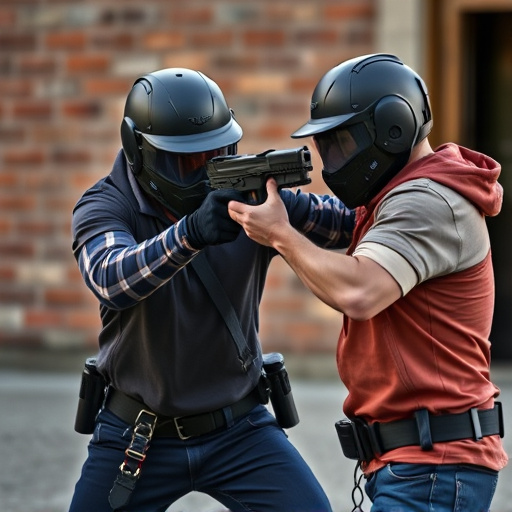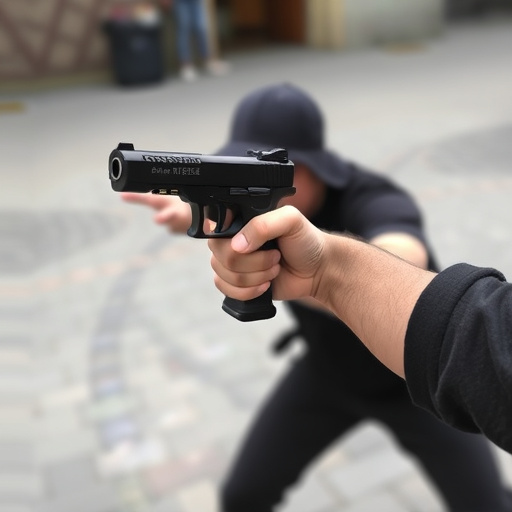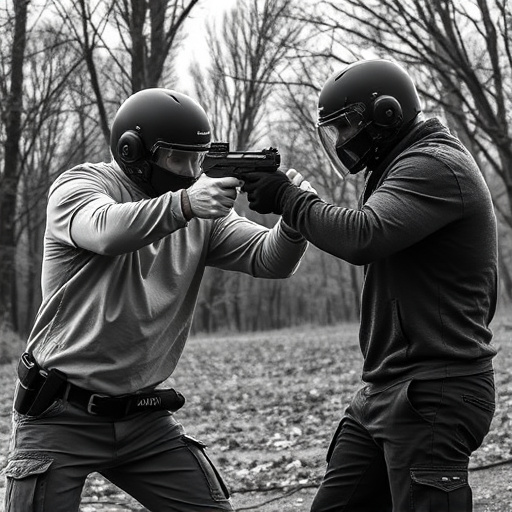Understanding voltage penetration is crucial when assessing stun gun effectiveness. Thicker clothing acts as insulation, so higher voltage and ampere ratings with longer prongs for improved contact area and deeper penetration are key. Look for products meeting certification standards, detailed specifications, independent testing, and specific output ranges (50,000-120,000 volts). Prioritize quick charging, long-lasting batteries, durable construction, and water resistance for optimal personal safety when buying stun guns.
“Unveiling the mysteries of voltage penetration through thick clothing is essential for personal safety enthusiasts. This comprehensive guide delves into the science behind stun gun effectiveness and how clothing thickness impacts their performance. We explore the factors influencing stun gun power, analyze different fabrics’ effects on voltage transmission, and dissect testing standards ensuring device reliability.
Additionally, we equip readers with crucial insights on what to look for when buying stun guns, highlighting key features for optimal protection.”
- Understanding Voltage Penetration: Factors Affecting Stun Gun Effectiveness
- What Makes Clothing Thick? A Material-Specific Analysis
- Demystifying Stun Gun Performance: Testing and Certification Standards
- Key Features to Consider When Buying Stun Guns for Optimal Protection
Understanding Voltage Penetration: Factors Affecting Stun Gun Effectiveness

Understanding Voltage Penetration: Factors Affecting Stun Gun Effectiveness
When considering what to look for when buying stun guns, it’s crucial to grasp how voltage penetrates through thick clothing. The effectiveness of a stun gun depends on several factors, including the device’s power output and the material of the garment. Materials like denim, leather, or even bulkier fabrics can significantly reduce the electrical current delivered to the target. Thicker clothes provide more insulation, making it harder for the voltage to pass through and disrupt the body’s nervous system.
Therefore, when purchasing a stun gun, ensure it has enough power to penetrate through such barriers. Look for devices with higher voltage and ampere ratings, as these indicate greater penetration capabilities. Additionally, consider the type of prongs or electrodes used—longer ones often provide better contact area and deeper penetration.
What Makes Clothing Thick? A Material-Specific Analysis

Clothing thickness is a multifaceted consideration, with various factors contributing to its overall structure and protective capabilities. When assessing clothing for its ability to resist voltage penetration, particularly when purchasing stun guns, what makes a fabric thick involves more than just its visible depth. The density and weight of the material play significant roles, as does the type of fibers used. Natural fabrics like wool and cotton have a unique crimped structure that provides natural insulation, while synthetic materials such as polyester or nylon offer enhanced durability and water resistance.
Moreover, the weaving process itself influences thickness. Tight weaves create barriers that interrupt the path of electrical current, thereby increasing protection. Textured or knitted fabrics often excel in this regard due to their intricate interloping threads. When buying stun guns, understanding these material-specific attributes is crucial for ensuring optimal safety and effectiveness.
Demystifying Stun Gun Performance: Testing and Certification Standards

When considering purchasing a stun gun, one of the most crucial aspects is understanding its performance and reliability, especially in terms of voltage penetration through clothing. Demystifying the inner workings and testing standards behind stun guns is essential for buyers to make informed decisions. Look for products that adhere to strict certification standards, ensuring they meet or exceed safety and performance benchmarks.
Testing procedures vary across regions but typically involve assessments of electrical output, current duration, and safety mechanisms. Reputable manufacturers will provide detailed specifications on these tests, offering insights into the stun gun’s effectiveness against various clothing types and body sizes. What to look for when buying stun guns includes evidence of independent testing and certification, ensuring you invest in a device that delivers the required voltage penetration to incapacitate an assailant effectively.
Key Features to Consider When Buying Stun Guns for Optimal Protection

When purchasing a stun gun for personal protection, several key features should be at the top of your list. Firstly, voltage and current ratings are crucial indicators of its effectiveness. Look for devices with higher voltage outputs, typically ranging from 50,000 to 120,000 volts, to ensure maximum impact on an attacker. Additionally, consider stun guns with adjustable current settings; this allows you to adapt the device’s power based on different situations and levels of threat.
Another important aspect is charge time and battery life. Opt for models that offer quick charging capabilities, ideally under 30 minutes, so you’re always prepared. Long-lasting batteries are also essential, as they ensure continuous protection without frequent recharging. Moreover, durability is a must, especially if you plan to carry the stun gun regularly. Look for sturdy construction and water-resistant designs to withstand various environments.
When it comes to personal safety, understanding voltage penetration through clothing is crucial. This article has explored various aspects of stun gun effectiveness, from the factors influencing their power to the importance of material composition in clothing. We’ve also delved into testing standards and key features to consider when purchasing a stun gun for optimal protection. Remember that, in terms of self-defense tools, knowing what to look for when buying stun guns can make all the difference.
